The best electric SUVs 2024
If there is one type of vehicle that makes the most sense for manufacturers as an electric car, it is e-SUVs. And not because their basic aerodynamic shape and compact format enable the lowest possible power consumption and thus long ranges. On the contrary, the design has some disadvantages in terms of efficiency. But why do manufacturers then mainly rely on SUVs for their electric models?
Crossovers and SUVs are at the top of buyers' favour. That's why manufacturers are trying to combine two industry trends by launching SUVs with efficient electric drives. E-SUVs not only promise high sales figures, but also higher margins due to the somewhat more expensive new prices. In addition, the batteries of this type of vehicle can be easily accommodated in the underbody.
Of course, the whole thing also has advantages for the buyer: on the one hand, the pleasant entry height, and on the other hand, the usable roof and trailer loads. Thanks to the increased ground clearance and the all-wheel drive, which is available as an option in many cases, you are not completely lost off paved roads. The high seating position conveys a feeling of safety and offers a good overview of the traffic situation.
The range of e-SUVs ranges from the Dacia Spring mini crossover, currently the cheapest electric car in Germany, to luxury steamers such as the Mercedes-Maybach EQS SUV. More and more competitors are joining them, especially from the Far East.
Viewed individually, e-cars in SUV form such as the Dacia Spring or the Citroën ë-C3 may seem cheap, but classic combustion engines from the same price range often offer significantly more car for the money. Currently, there is still a large price difference between the drive types due to the cost-intensive battery production. And yet there are now numerous models available that are already very good and often cheap to drive in everyday life.
In our top 7, we introduce you to the best e-SUVs that stand out positively from the mass of vehicles on offer due to their characteristics. They not only offer long-distance ranges, but also plenty of space, sufficient power, the necessary fine-tuning and overall an attractive price-performance ratio.
| Model | max. range according to WLTP | Achievement | Price |
|---|---|---|---|
| Smart #1 | 440 km | 272-428 hp | from 37,490 euros |
| Škoda Enyaq | 563 km | 179-340 hp | from 48,900 euros |
| Tesla Model Y | 600 km | 299-534 hp | from 44,990 euros |
| Renault Scenic E-Tech | 625 km | 170-218 hp | from 41,400 euros |
| Hyundai Ioniq 5 | 507 km | 170-325 hp | from 43,900 euros |
| Kia EV9 | 541 km | 204-385 hp | from 72,490 euros |
| BMW iX | 633 km | 326-619 hp | from 77,300 euros |
Smart #1: From microcar to compact SUV
The Smart #1, which has been manufactured in China since 2022, is symbolic of Smart's new beginning as a joint venture between Mercedes and Geely. Instead of a motorized shopping cart, the restructured company has put a modern electric SUV on its wheels.
With a length of 4.27 meters, it offers enough space for five people. There is no shortage of headroom and legroom in both the first and second rows. The trunk volume, on the other hand, is rather tight at 288 liters - but the rear bench can be moved by 13 centimeters and there is also a small frunk under the bonnet.
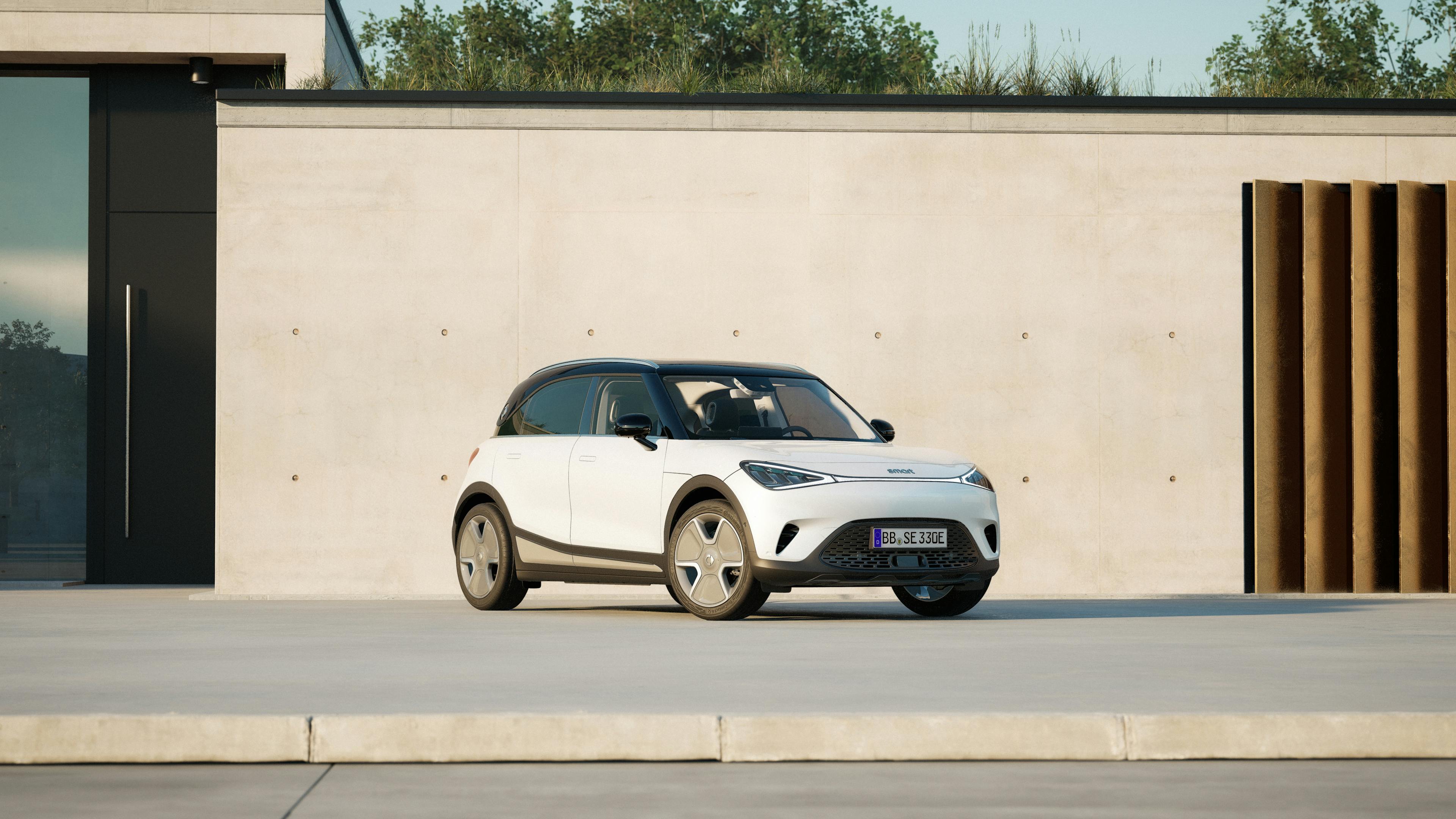
Compared to the competitors in its segment, the German-Chinese electric SUV is really good in the feed. Even the basic model with rear-wheel drive has 272 hp, which accelerates the 1.8-ton SUV from zero to one hundred in just 6.7 seconds. If that's not fast enough for you, you can go for the more powerful all-wheel drive variants. At the top is the 428 hp Brabus version, which reaches country road speed in just 3.9 seconds. All variants are limited to 180 km/h.
Depending on the version, the battery is 49 or 66 kilowatt hours (kWh) in size, which is enough for standard ranges between 310 and 440 kilometres. Thanks to a charging capacity of up to 150 kW, the charge level of the electricity storage units at a fast charging station can be brought from 10 to 80 percent in less than half an hour. The prices are comparatively low for what is offered. It starts at 37,490 euros. If you want the maximum range, 44,990 euros are due.
Škoda Enyaq: The more spacious brother of the VW ID.4
In 2020, Škoda launched the Enyaq, its first model designed from the ground up as an electric car. With a length of 4.65 meters, the electric SUV is positioned between the compact and mid-size classes in terms of size and is based on the MEB (Modular Electric Drive Toolkit), the Volkswagen Group's versatile electric platform.
The Czech electric SUV is thus closely related to the VW ID.4. The technology brother from Wolfsburg is particularly critical of the simple choice of materials in the interior. In direct comparison, the cockpit of the Škoda Enyaq looks much more lovingly made, more intuitive and a whole lot more high-quality. Although the two electric cars from the VW Group are very similar, the Škoda even surpasses the Volkswagen in terms of space. In the rear, the Enyaq offers a little more legroom and headroom, and the luggage compartment is also a little more generous. Škoda's e-SUV offers a trunk volume of 585 to 1,710 liters, while the VW ID.4 offers 543 to 1,575 liters.
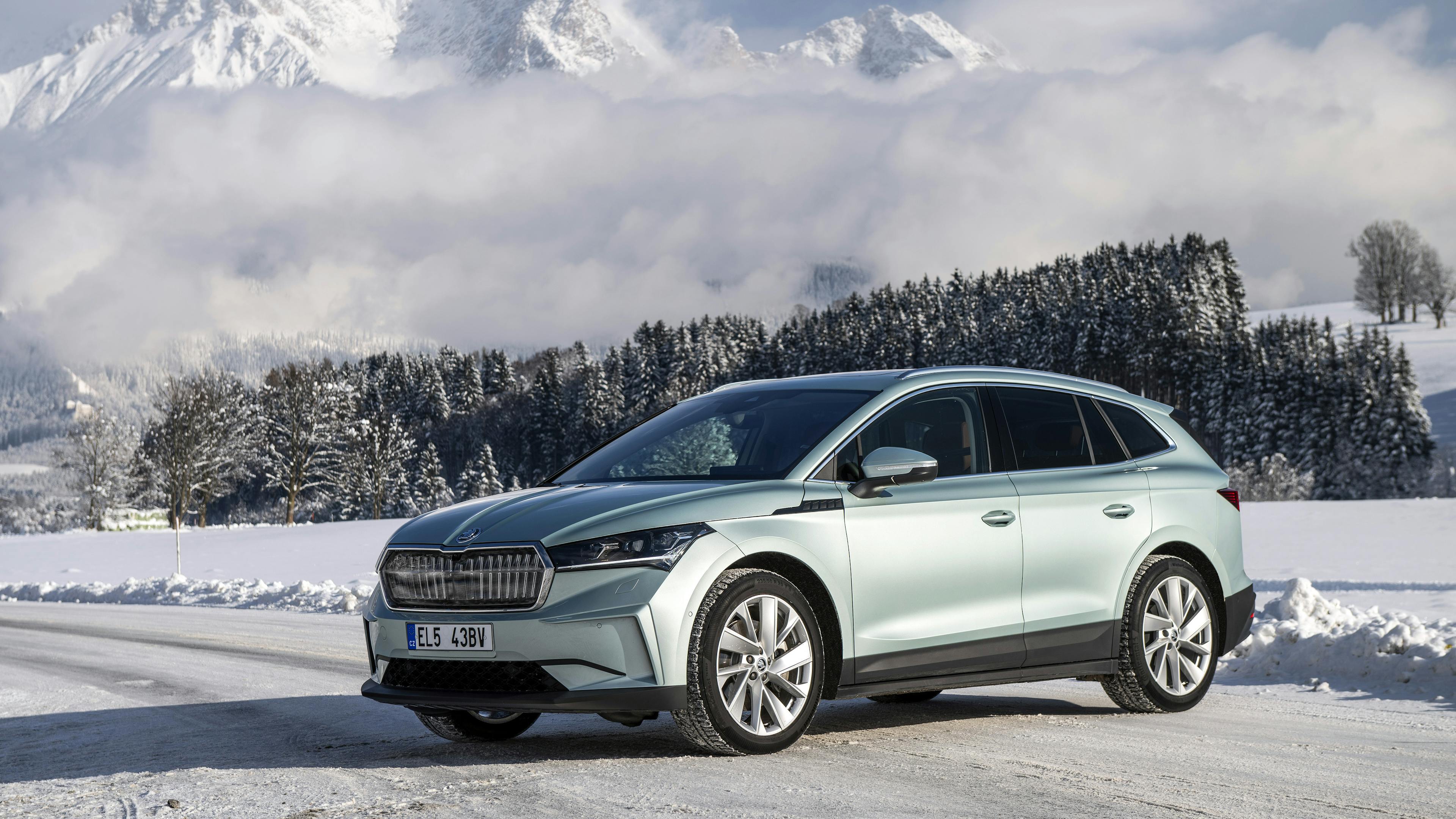
The Enyaq drives quietly and comfortably and is also confidently motorized in all variants. The rear engine of the 160 km/h fast base model produces 179 hp, while the sports version Enyaq RS comes with one motor on each axle and a system output of 340 hp. The Enyaq RS accelerates from zero to one hundred in just 5.5 seconds, and at 180 km/h it is electronically limited.
The smaller battery has a net capacity of 58 kWh, while the larger battery has 77 kWh. According to the WLTP standard, the electric SUV can travel 412 to 563 kilometers. The Enyaq is also available as an SUV coupé, which is one of the production cars with the lowest drag coefficient. The Enyaq Coupé 85 variant is said to have a range of as many as 573 kilometres.
Škoda specifies the maximum charging power at 175 kW. The charge level can be brought from 0 to 80 percent in 29 minutes. The bottom line is that the Czech e-SUV is not only more spacious, high-quality and efficient than its counterpart from Wolfsburg, but with a base price of 48,900 euros, it is even a tad cheaper. This makes the Škoda Enyaq one of the best electric SUVs ever. Incidentally, the ADAC also sees it that way, giving it an excellent test score of 1.6.
Tesla Model Y: The benchmark of the electric pioneer
Tesla's mid-size electric SUV was the best-selling car in the world in 2023. But why was the Model Y able to convince so many customers internationally? On the one hand, there is the price-performance ratio: Due to high quantities, modern production methods and the "electric only" strategy, which has been consistently implemented from the beginning, Tesla can produce the model much more cheaply than the traditional carmakers.
This allows Tesla to offer the electric SUV, which uses the technology of the Model 3 to a large extent, at a reasonable price. Last year, the carmaker offered zero percent financing for the model and discounts of several thousand euros are not uncommon. In addition, buyers can enjoy the "Tesla Supercharger" network in addition to the public charging infrastructure, which pays off especially on long distances.
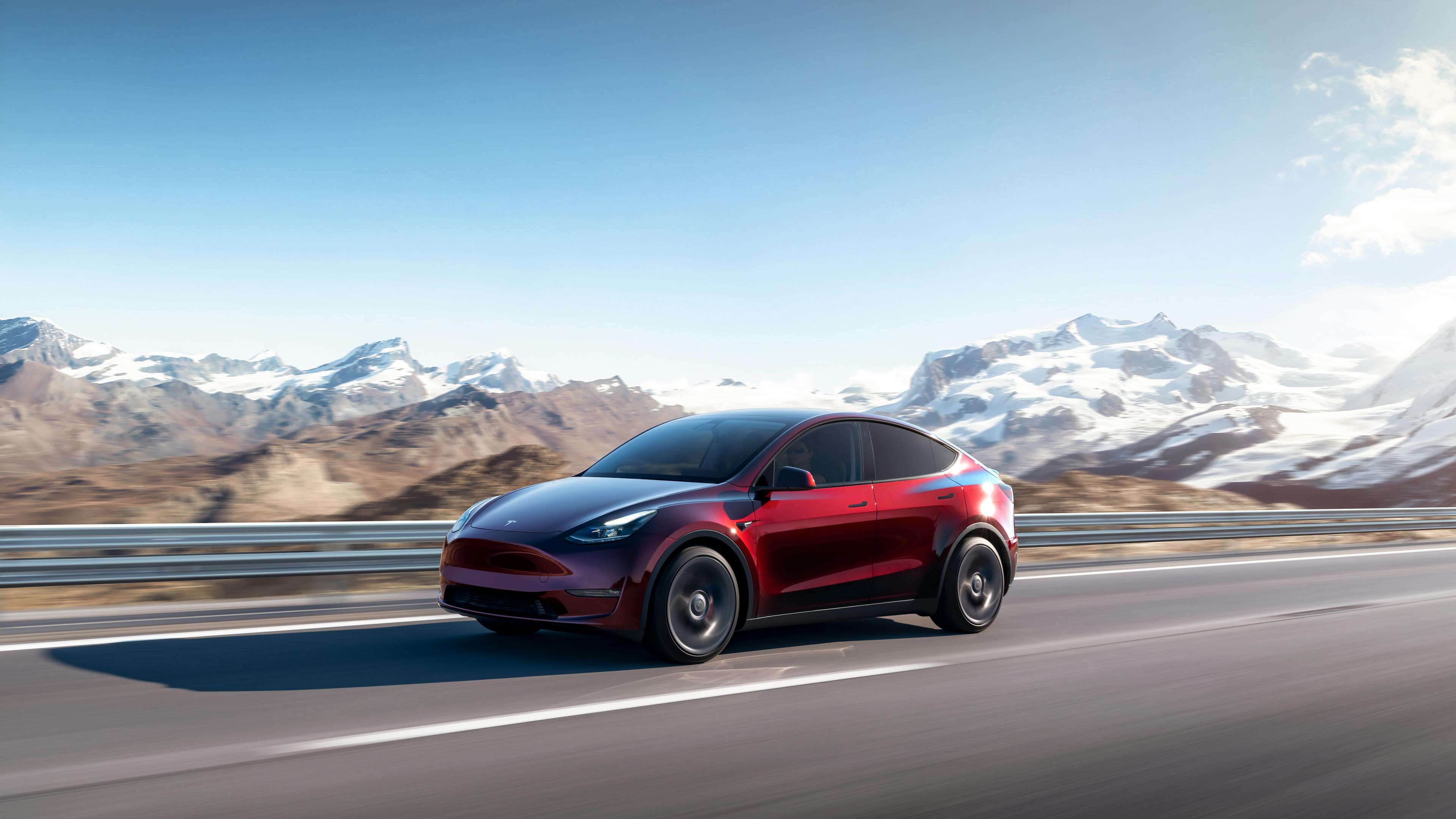
In addition, the car itself has some strengths that stand out, for example the excellent software, which is always kept up to date via "over the air" updates. Even if there is still room for improvement in terms of comfort and the general impression of quality, the space of the 4.75-meter-long Model Y, one of the best electric SUVs ever, is particularly convincing. The trunk swallows 600 to 1,900 liters, plus a frunk with a capacity of 80 liters. Tesla's battery technology, drive technology and driving dynamics are also among the advantages of the Model Y.
Even on the data sheet of the basic version, which starts at 44,990 euros, there are 299 hp and 420 Newton meters of torque. The 1.9-ton electric SUV accelerates from zero to one hundred in 6.9 seconds, and the top speed is 217 km/h. Drivers with sporting ambitions should go for the Performance variant, which costs just under 60,000 euros. Thanks to the electric all-wheel drive with two motors and a system output of 534 hp, it goes from zero to one hundred in 3.7 seconds, and the end of the line is only reached at 250 km/h.
Depending on the version, the batteries are 60 or 77 kWh in size and the range is 455 to 600 kilometres. According to Tesla, the electric SUV charges at HPC stations with up to 250 kW, which makes long distances less frightening. It only takes 27 minutes to bring the charge level from 10 to 80 percent.
Renault Scenic E-Tech: Range king from France
With the change from the fourth to the fifth generation, Renault has transformed the former Scenic minivan into a trendy electric SUV. And the French have probably done a lot right: The Scenic E-Tech has already won the "Car of the Year 2024" trophy and is one of the best e-SUVs.
Especially in the second row, the Škoda Enyaq competitor offers princely space conditions. According to Renault, it sets standards in its segment in both legroom and headroom. During the first test drives, we were able to convince ourselves of the airy feeling of space in the electric SUV. You can find the whole test in this video.
The trunk has a volume of 545 liters. In terms of engines, the front-wheel drive Scenic E-Tech is down-to-earth. The electric motor of the basic model has an output of 170 hp, while the top model has 218 hp. The most powerful version accelerates from zero to one hundred in 7.9 seconds if necessary, and propulsion is electronically limited at 170 km/h.
The battery of the entry-level version has a capacity of 60 kWh, while the Scenic E-Tech Long Range has 87 kWh. The manufacturer specifies the range as 430 or 625 kilometres according to WLTP – the latter is a real top value in this segment. At DC fast-charging stations, the electric SUV charges with up to 150 kW. This should be able to bring the battery level from 15 to 80 percent within 37 minutes. Prices start at 41,400 euros, while the version with the maximum range costs at least 48,900 euros.
Hyundai Ioniq 5: Fast charger in a cool retro design
The Hyundai Ioniq 5 is one of the most popular electric SUVs in the compact segment. One of the main reasons for this is probably its design. The Korean carmaker has given the VW ID.4 opponent a decidedly cool sheet metal dress with retrofuturistic elements. This not only brings back memories of one or the other video game, but also of legendary eighties models such as the Lancia Delta.
The true strengths of the Ioniq 5 are hidden under the sheet metal. Hyundai's E-GMP electric platform is one of the most modern ever and allows generous interior space. The luggage compartment volume is also impressive: the luggage compartment swallows 531 litres. If you have folded down the rear seat, it is 1,600 liters. One of the highlights in the interior of the electric SUV is that the front seats can be adjusted to a reclining position.
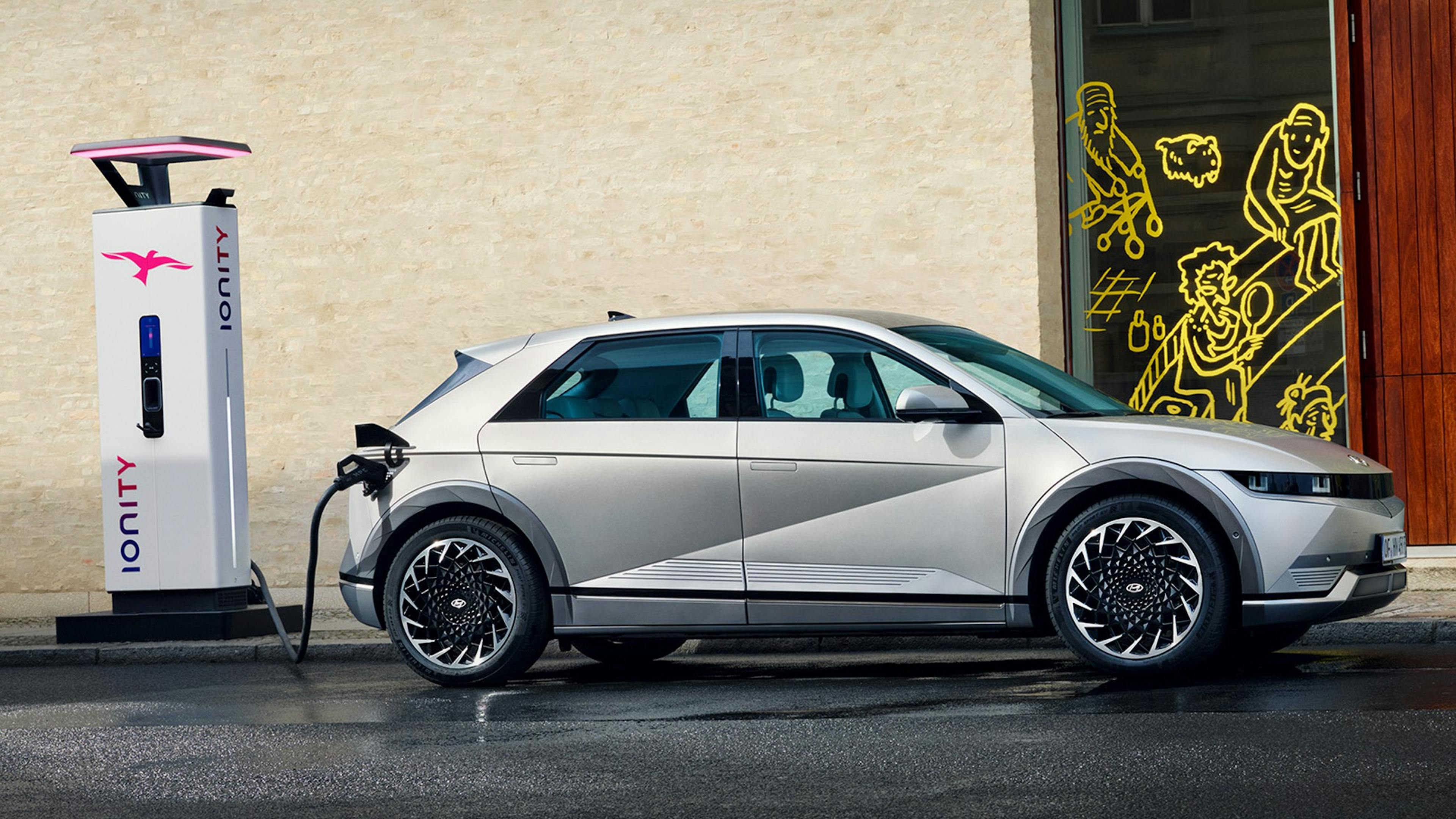
The 4.63-metre-long Ioniq 5 is available with both rear-wheel drive and all-wheel drive. The system outputs are between 170 and 325 hp. Since 2024, there has also been the Ioniq 5 N sports model, whose data sheet says a whopping 650 hp. But the driving performance of the 325 hp version is already convincing: The all-wheel-drive vehicle accelerates from zero to one hundred in 5.1 seconds and is limited to 185 km/h.
The Ioniq 5 is really fast at the charging station, which makes it one of the best e-SUVs. The platform has an 800-volt on-board electrical system, which enables an impressive charging power of up to 240 kW.
The 77.4 kWh battery of the upscale version can thus be brought from 10 to 80 percent in just 18 minutes. This means that the electric SUV from Korea charges almost twice as fast as many competitors. Depending on the version, the Koreans specify the range as 384 to 507 kilometers. The price list starts at 43,900 euros, so the Ioniq 5 is priced in the middle of its segment.
Kia EV9: The only electric seven-seater SUV
Kia's electric SUV flagship EV9 is also on the group's own E-GMP platform and thus belongs to the select circle of 800-volt electric cars. The five-metre-long and 2.7-tonne heavyweight also has a real unique selling point: it is the only electric car to date that can be ordered as a seven-seater with a third row of seats.
The EV9 is not only suitable for large families, but is also equipped for use as a workhorse. When the third row of seats is folded down at the touch of a button, the trunk swallows 807 liters, and a maximum of over 2,300 liters. In addition, the all-wheel-drive version has a towing capacity of a whopping two and a half tonnes, which also makes the EV9 stand out positively from the mass of electric SUVs.
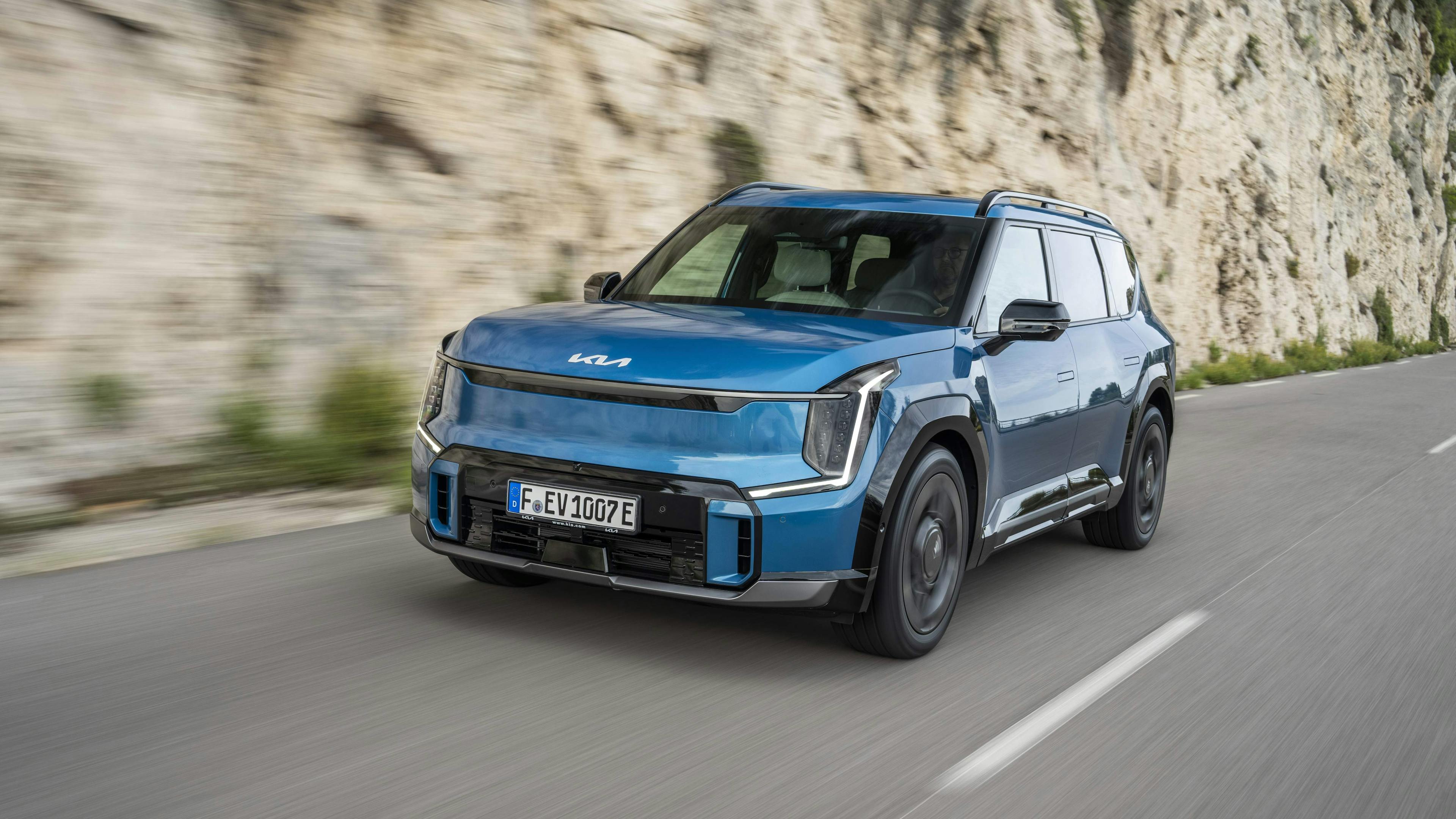
The basic model of the seven- or six-seater family cruiser has only one rear engine with 204 hp. In the upscale version, there is an electric motor on each axle, resulting in an electric drive. The system output of the GT-Line is 385 hp and 700 Newton meters of torque, which is enough for a zero-to-one hundred sprint in just 5.3 seconds. Quite impressive for such a colossus. At 200 km/h, the most powerful EV9 runs into the limiter.
The battery always has an energy content of 99.8 kWh, which is enough for WLTP ranges of 497 to 541 kilometres. In reality, it is more like 300 kilometers on the highway, but the large e-SUV is still suitable for long distances. The EV9 charges with up to 210 kW. Ideally, the charge level of the battery can be increased from 10 to 80 percent within just 24 minutes. But the whole thing is not for free: Prices for the electric SUV start at 72,490 euros. If you want the richly equipped GT-Line, you have to reckon with at least 82,380 euros.
BMW iX: Good all-rounder in the premium segment
Of course, the German premium manufacturers now also have models in their range that are among the best electric SUVs. BMW's iX in particular stood out positively in tests. The design of the 4.95-meter-long luxury SUV may be polarizing, but the space, the workmanship and material quality as well as the driving culture and the modern assistants are more than appealing.
BMW has given the model a decidedly futuristic character, which is particularly noticeable in the reduced, modern cockpit. The luggage compartment offers a volume of 500 to 1,750 litres. However, the iX, which is always all-wheel drive, convinces above all with its powerful and efficient drives.
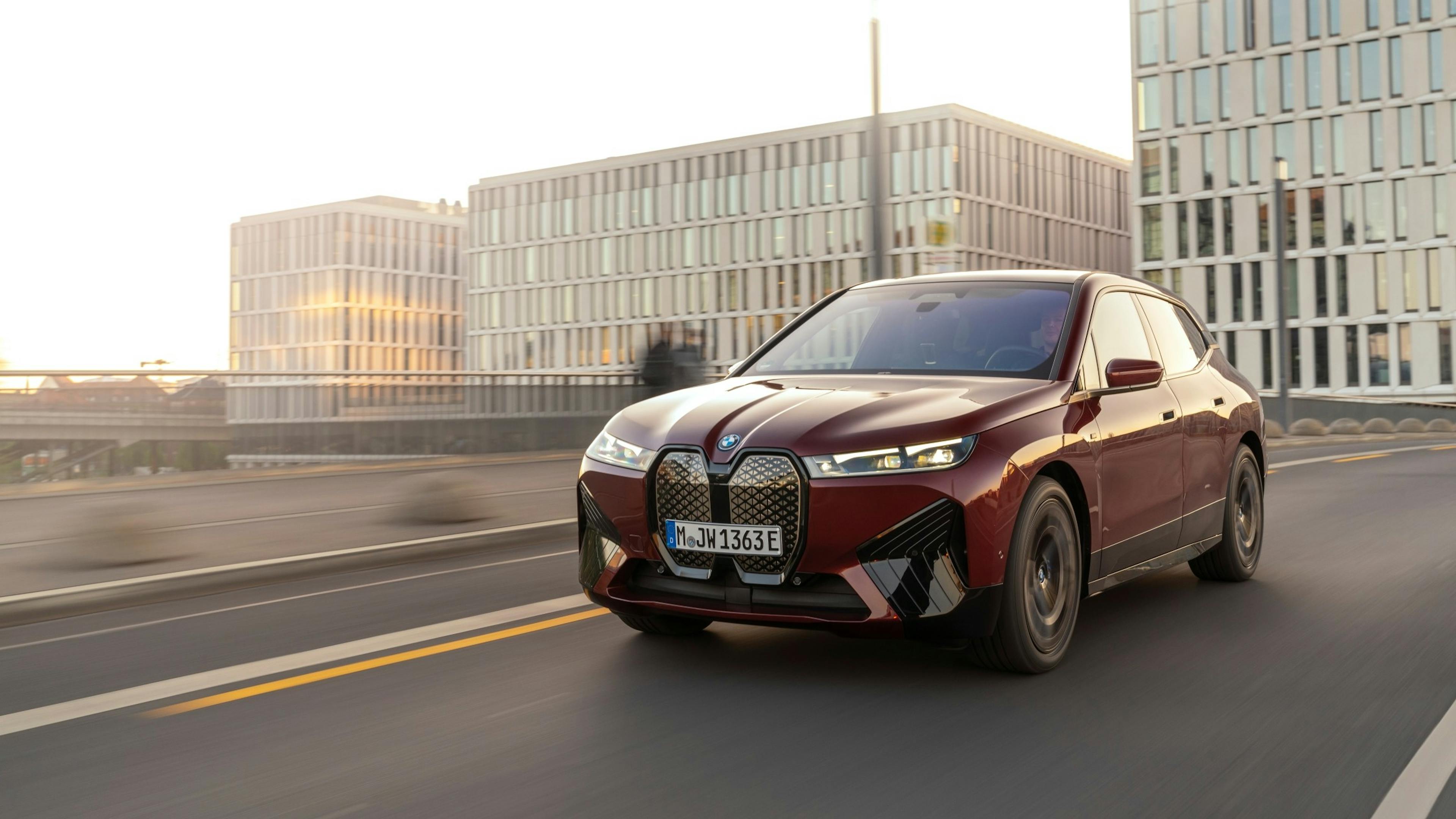
The power range ranges from 326 to 619 hp. At the top of the food chain is the iX M60, which accelerates from zero to one hundred in just 3.8 seconds despite a curb weight of 2.7 tons. It is limited to 250 km/h. The smallest battery has a net capacity of 74.4 kWh, while the batteries of the more powerful versions are 107.7 and 109.4 kWh respectively.
The Munich-based company states that the ranges of the electric SUV built in Dingolfing are 435 to 633 kilometers.Thanks to the extremely efficient powertrain of the Bavarians, however, the figures are not pure fantasy values like many competitors, but realistic key data. In terms of charging power, however, there are better cars in the luxury class.
At its peak, the iX charges with 195 kW. The charge level can be brought from 10 to 80 percent in just over half an hour. The large electric SUV from BMW offers a well-rounded overall package, but it also has its price: Even the cheapest version costs 77,300 euros.
